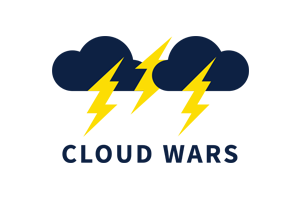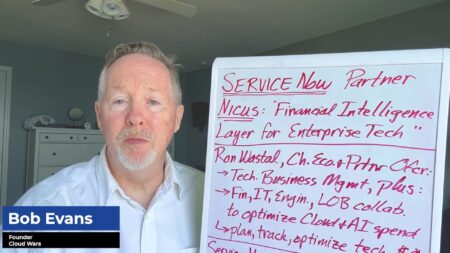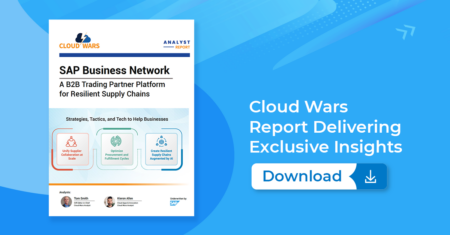Transforming their long-standing strategic partnership to harness the full power of their global ecosystems, IBM and SAP are putting a renewed focus on helping clients accelerate the creation of new business models, revenue streams, and data-driven opportunities.
In a lively video roundtable exploring the changing nature of how IBM and SAP are working with partners to drive new types of value for clients across the globe, executives from IBM and partner HCL described how client engagements are evolving away from IT-driven projects to business-driven initiatives centered on customers, revenue growth, and innovation.

“We’ve undergone big changes in not just how to work now that everything’s remote, but also in a new focus on accelerating digital transformation,” said Jorge Ros, vice-president of IBM’s Cloud Ecosystem.
“Clients are moving to new technologies and adopting new business models and extracting new value out of technology. We’ve been really focused on helping clients along this journey because we’re at a point now where it’s the really complex workloads that need to get moved to the cloud and the mission-critical pieces that need to be transformed,” Ros added.
“And that’s where our ecosystem partners can help, and that’s where IBM thrives in helping them deal with these complex problems.”
Keith Costello, general manager of IBM’s global SAP business unit, said the high volume of “pent-up demand” in the market is making it essential for IBM, SAP, and partners across the globe like HCL to work together even more closely than ever.
“All this pent-up demand is creating bottlenecks with supply chains and other factors, and at the same time we’re seeing the emergence of significant changes in business models and the realization that this is essential for growth,” Costello said.

“This pent-up demand is creating bottlenecks with supply chains and other factors, and at the same time, we’re seeing the emergence of significant changes in business models and the realization that this is essential for growth.”
Keith Costello, GM, Global SAP Business
“There’s also an acute sense that these changes need to take place much more quickly than they have in the past. And what’s driving these transformation changes—and these are changes that in the past a lot of our clients shied away from—is leaders are going to their boards and saying, ‘We think we can grow 20% in this area of the business but we need to move fast because everything around us is changing.’ ”
And then, Costello said, those leaders “look at everything upstream and downstream—all the people, processes, all the systems—and none of those things support what they’ve proposed. That’s when they tend to have a moment of what I call ‘the big freak-out.’ But then they take a few deep breaths and realize okay, this is doable but it’s going to take time we don’t have, and a lot of effort and intellect, and then they reach out and engage us.”
Driven by Business Imperatives
These massive and high-urgency projects are unique from big projects of the past, Costello said, because they’re driven solely by business imperatives rather than tech-centric factors.
“Now, it’s always something in the business, some strategic move they need to make,” he said. “And the pressure being brought to bear by all these outside circumstances—remote work, supply-chain disruptions, etc.—they just contribute to this sense of urgency. That then leads to the questions about what we need to do technologically to take advantage of this opportunity and to do so fast?”
IBM’s Ros underscored Costello’s point by emphasizing that the cloud needs to be seen as a means to an end, and not the end in itself.
What we have in our cloud or in any cloud is a toolset,” Ros said. “It’s a very powerful toolset, but on its own, that’s all it is. Cloud is not a destination. Cloud is a tool used by clients to solve problems. When clients look at their workloads, they don’t want just any cloud. They want the right cloud for the right workload, and that’s what we’re focused on.”

“Cloud is not a destination. Cloud is a tool used by clients to solve problems. When clients look at their workloads, they don’t want just any cloud. They want the right cloud for the right workload.”
Jorge Ros, Global Leader Cloud Platform, IBM Cloud & Cognitive IBM
For IBM and its partners, Ros said, that means an IBM cloud solution can also include SAP applications solutions, and VMware via IBM’s unique relationship, plus other high-value partner solutions.
“So we’re seeing the tearing down of a lot of barriers that existed in the past around how the industry worked and the emergence of very interesting partnerships that allow our huge ecosystem of partners to layer and provide services on top of our cloud to bring more and more value and better outcomes for our clients.”
HCL has emerged as a strategic partner for both IBM and SAP, and HCL’s global SAP ecosystem leader, Ajay Pasuvula, said these fast-evolving partnerships are helping clients deal with three disruption changes: in culture, in the adoption of AI, and the formation of industrywide consortiums. Pasuvula said that the unique talents of all three companies—IBM, SAP, and HCL—are required to drive full value for clients.
Pasuvula said that the unique talents of all three companies—IBM, SAP, and HCL—are required to drive full value for clients.
Here’s how Pasuvula broke out those three big disruptions:
• Culture. “For many companies, they’re pushing cultural change and process change at the same time, with the goal to simplify their processes. And at the same time with all this new technology being introduced, how do you bring together the people aspect and the new technology?”
• AI. “We are finding that AI productization is getting driven more often from the client’s perspective rather than from the AI vendor, so how do we help create a strong value chain within that? We want customers to have one stack offering where there is only one partner for contract, so that customers have only one SLA to manage as the customer embarks on this intelligent journey.”
• Consortiums. “Industry consortiums are getting formed as the clients themselves are collaborating, so this is a time for all of the consulting companies to collaborate as well to help clients get to the next level. Technology is important but it’s just an enabler. Clients need a platform to build upon, and that’s where the partners can play a big role.”
Just as multiple companies are finding ways to work together within industries, those businesses—with help from their tech vendors and partners—are finding ways to combine multiple new high-impact technologies to create powerful new solutions that extend the value and capabilities of the cloud itself.
“It’s not just the cloud itself, but it’s all the tools and analytics and other capabilities that maximize the value for clients,” Costello said.
“For SAP, this transition to the cloud has been going on for several years. So they want to leverage the skills they have in-house. This presents an interesting dynamic, and it’s one that IBM CEO Arvind Krishna talks about a lot with hybrid cloud, to help clients pick the right cloud for the right workload based on what their business needs are.”
While SAP workloads are the largest for most clients, Costello said, about 70% of their total number of workloads are not SAP—and, many of those are built on customized or partially customized software.
“These are applications for managing transportation logistics, or industry-specific needs in pharmaceuticals, or tracking and tracing, or lots of other very specific apps,” he said. “And they built this thing from the ground up, and it was last modified in a significant way 20 years ago, and nobody knows exactly how the heck the thing works but at the same time they know they have to modernize it. So they lift and shift it to the cloud and get some incremental savings because it’s no longer running in their in-house data center.
“Well that’s all fine, but ultimately that’s just step #1 out of about 100, and the other 99 steps are very difficult. A lot of it is written in COBOL, which almost nobody knows anymore, but it’s tied into the SAP systems, and they’re moving SAP to the cloud, so what happens to all these bespoke applications and workloads?”
That’s been a major sticking point for customers: how do they integrate these customized systems in a way that maximizes the client’s business benefit while also lowering risk?
HCL’s Pasuvula said the key is for clients and their tech vendors and partners to focus on getting full value out of their data.
“Companies need to understand—really understand—why they are embarking on this journey of modernization, and more and more they’re finding that the reason is that it will allow them to extract the full value of their data,” he said.

“Companies need to understand—really understand—why they are embarking on this journey of modernization, and more and more they’re finding that the reason is that it will allow them to extract the full value of their data.”
Ajay Pasuvula, Global SAP Ecosystem Leader, HCL Technologies
“And that value is only going to come if they can look at the data in a more secure and focused way to be able to create new solutions from that data out at the edge rather than in the core,” Pasuvula said. “That’s where the value of the cloud comes for many of the customers that have gone through this journey.”
A Path to the Cloud
Building on that point, IBM’s Ros said that SAP’s RISE “business modernization as a service” program is the ideal guide for businesses in today’s turbulent world.
“The new partnership with IBM and SAP around RISE gives clients a pathway to migrate to the cloud with IBM and IBM Cloud and IBM Consulting, and it also gives our ecosystem partners like HCL the opportunity to add value on top of that. They can help with the migration, with the movement to the cloud and extract the value from data to get better business outcomes from these SAP applications,” Ros said.
If that sounds like a big chore in itself—and it certainly does—the challenge gets a little more daunting when these companies are asked to achieve all that much more rapidly than they’ve ever done in the past. “Our clients are interested in how IBM and our partners can bring acceleration to the table,” Costello said.
“And with RISE, SAP has worked very closely with its partners to advance the overall ability for clients to get to the cloud more quickly with SAP,” he said. “They’ve packaged capabilities to help clients accelerate their own journey to S/4HANA, which means whatever business change they’re pursuing can get done more quickly.”
“The financial-services cloud is just one example of where SAP is in the process of getting certified to run on the IBM Cloud for Financial Services. And we at IBM have done hundreds of millions of dollars’ worth of work in advance for our financial-services clients to make sure we’ve got a compliant cloud that meets their security protocols and everything else.”
“So the whole notion with RISE is to accelerate the client’s journey because time is money,” Costello said. “So the quicker we can do things, and the more efficiently we can do them, then the more excited clients are going to be to come on this cloud journey with us.”







